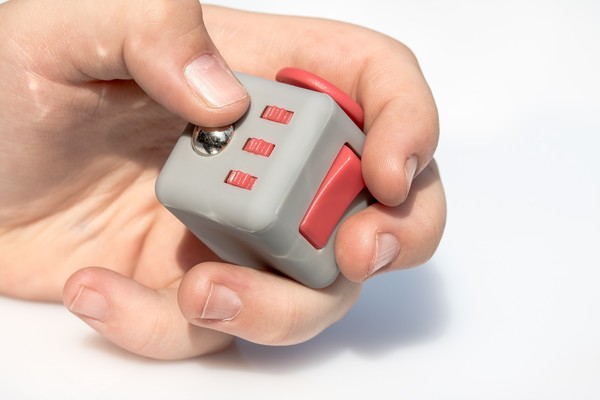Why fidgeting devices are not a source of distraction

FOCUSING ON an academic task can be a challenge. Consequently, some educators choose to introduce concentration-enhancing “fidget toys” that students keep on their desks, while others believe they are merely added distractions to the classroom. However, there is ample debate on whether students genuinely need fidget toys to enhance their academic prowess. Although it is unusual for schools to permit toys in the learning area, they might have a positive influence when used correctly.
The innate need to fidget
Small, mindless movements of the body are not abnormal behaviors. The long history of fidgeting gadgets suggest that these “toys” are made to meet the human need to have one’s physical state be parallel to the active motions of the mind.
One example of this are the Baoding balls from the Ming dynasty of ancient China. They can be made of various materials, from steel to gemstones[1], and are used by rotating several of them in one’s palm to get into a meditative mindset. Moreover, the komboloi, or “worry beads,” hold a great cultural significance in Greece. Originating from the prayer beads used by the monks, komboloi traditionally refers to a string of beads that can be moved up and down a silk cord to keep one’s mind off a problem.
What these gadgets have in common are their association with the human urge to self-soothe by engaging the body in action while the mind churns away. According to the researchers Roland Rotz and Sarah D. Wright, fidgeting is part of the process of sustaining our focus, as “fidgeting distracts part of the brain that’s become bored so the other parts can pay attention to what we’re reading, hearing, or seeing[3].” Also referred to as the “floating attention,” this mechanism is believed to be an evolutionary trait from the times when hyper-focusing on a single task was undesirable, since it makes an individual ignorant of the possible dangers around them.
Therefore, it is only natural that students, especially those who are not old enough to self-regulate their concentration, are drawn to fidgeting objects. Children will inevitably be twiddling with their pencils, erasers, or any other object in immediate proximity.
Toys are not for school
Despite the naturality of fidgeting, it is understandable that fidget toys are not welcome in the classroom. Teachers often complain that fidget toys, especially fidget spinners[4], lower the productivity of the class. Such concerns are reasonable as most student’s intentions of using fidget toys are rooted in the desire to “play” rather than the need to optimize their learning. Educators claim that the novelty of fidget toys exposes students to unnecessary distractions, not to mention the difficulty of reinforcing the non-disruptive use of these devices. Some even suggest that fidget toys, as their names suggest, promote fidgeting behavior rather than mitigating it.
However, Dayna Abraham, author of The Superkids Activity Guide To Conquering Every Day sees the problem in a different light. “You see, the problem in America is not that all of the sudden kids need to use fidgets to focus,” she says. “The problem is that it’s never been recognized before[5].” According to Abraham, these gadgets are merely providing a better outlet for shaking one’s legs or chewing on the end of a pencil.
Fidget toys are more than playthings
Considering their benefits and complications, it is essential to choose fidget toys that can be used “invisibly.” Successful examples, such as wooden seesaws under the table, have proved that these gadgets can be used without causing a distraction for the rest of the class. We need to understand that effective fidget toys can be used discreetly and out of sight, without disrupting the focus of those who do not need them. Studies on the effectiveness of fidgets prove that if given the right tools, children are also capable of using them correctly[6]. Furthermore, enough thought should be given on “when” fidget toys should be allowed in class. For instance, fidgeting may heighten concentration in activities that involve active listening, such as during a lecture, whereas it has the potential to distract students from working as a group with their peers.
* * *
Incorporating fidgeting devices in an academic environment is a healthier alternative to forcing concentration on students who find it difficult. Therefore, to deny fidget toys in the classroom is the equivalent of denying an educational opportunity on self-regulation. By recognizing that humans are not built to sit still for long hours at a time will encourage schools to regard fidgeting devices as a supportive tool rather than a disruptive one.
[1] BaodingBalls.com
[2] Kyungpook National University Hospital Family Medicine
[3] Fast Company
[4] Fidget spinners: A metal, multi-lobed spinning structure that can be balanced on its center
[5] Lemon Lime Adventures
[6] Tes Magazine

